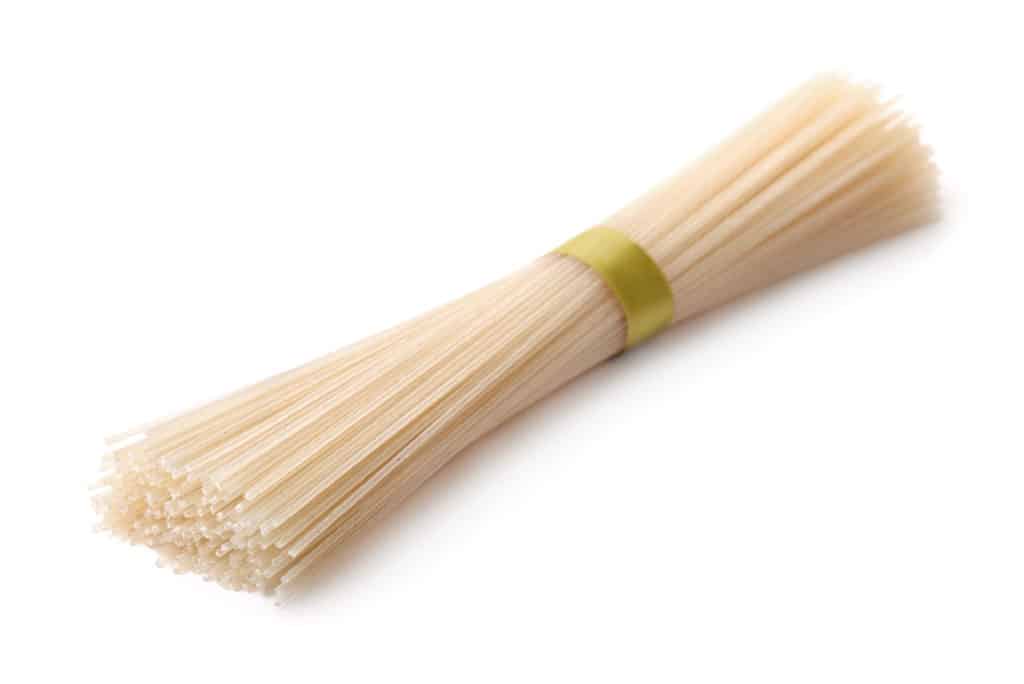There are now hundreds of pasta choices at grocery stores and restaurants. While endless pasta options sounds exciting – and delicious! – it can be easy to get confused when you’re looking for a quick, tasty, and healthy pasta dish. We break down the main types of pasta, their nutritional benefits, and the dishes they work best in.
Types of Pasta
Common Types of Pasta
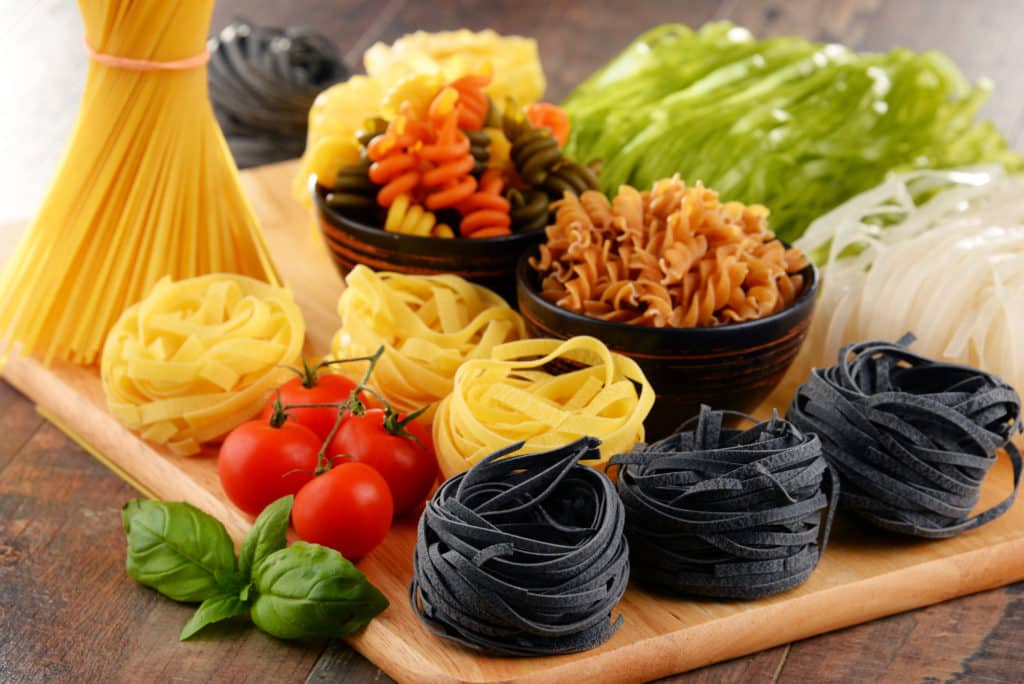
Enriched
Known for its milder flavor and tenderness, white pasta is sometimes called “refined.” Classic white is a great blank canvas for adding veggies and protein. From a nutritional stand point, white pasta is fortified with three major B vitamins (niacin, thiamin and riboflavin), iron and the B vitamin folic acid, which is critical in the prevention of some birth defects. In fact, enriched pasta contains six times more folic acid than its whole grain counterpart.
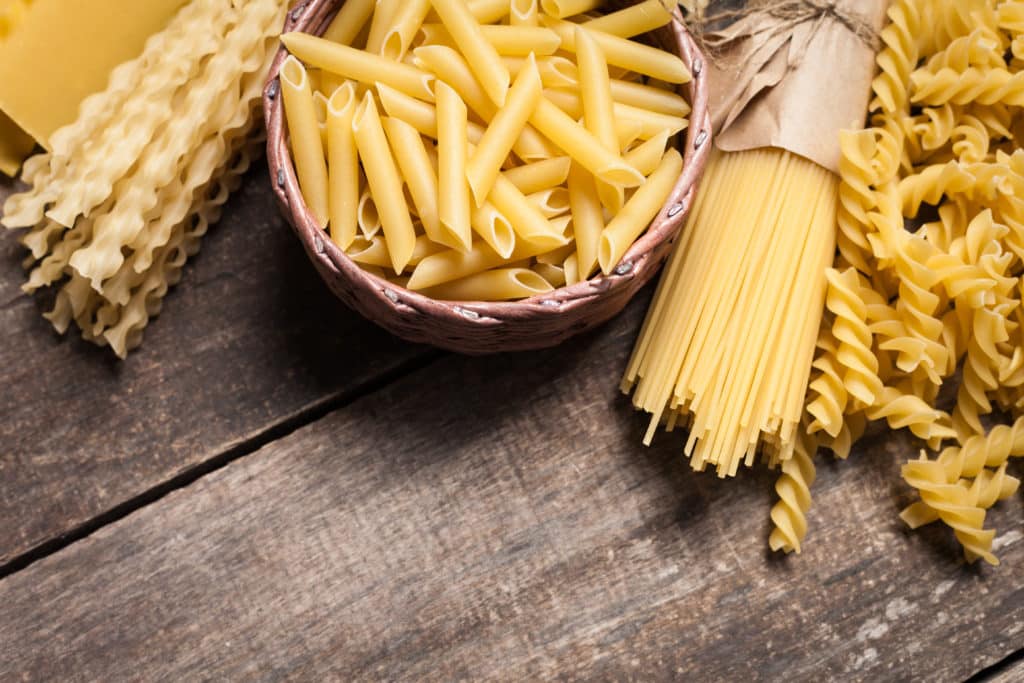
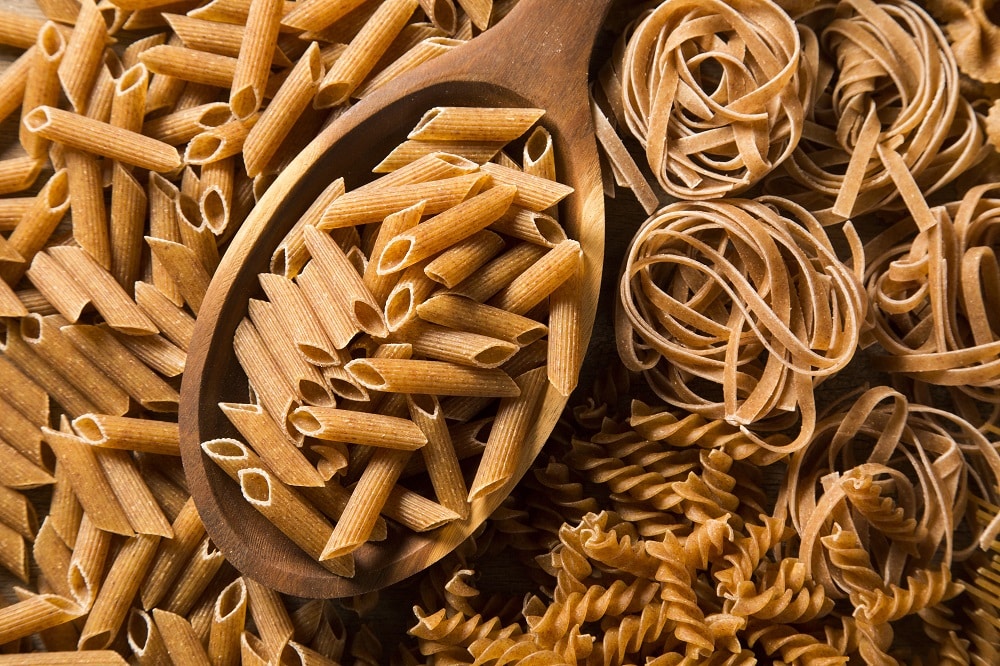
Whole Grain Pastas
Whole grains are found in their natural state growing on the farm and are actually the edible seed of the plant. All whole grains, including whole grain pasta, are composed of the entire kernel — all three components in their entirety: the endosperm or starchy part of the grain kernel, the germ, or embryo which is where the plant sprouts from, and the protective outer layer known as the bran layer. The bran has most of the fiber along with B vitamins, vitamin E, minerals like magnesium, antioxidants and phytonutrients. The germ also contains B vitamins and minerals, but in addition it has some protein and healthy unsaturated fats. The endosperm is mainly carbohydrate. Research shows that as part of a healthy diet, whole grains may reduce the risks associated with heart disease, stroke, cancer, diabetes and obesity, promote healthy aging and increase longevity. The USDA Dietary Guidelines encourage Americans to make half their grains whole grains.
Whole Wheat Pastas
In response to dietary guidance urging Americans to include more whole grains in their diets, manufacturers have introduced whole wheat pasta varieties. Whole wheat pasta contains the vitamins, minerals, and phytonutrients found in the entire grain and promotes a healthy diet.
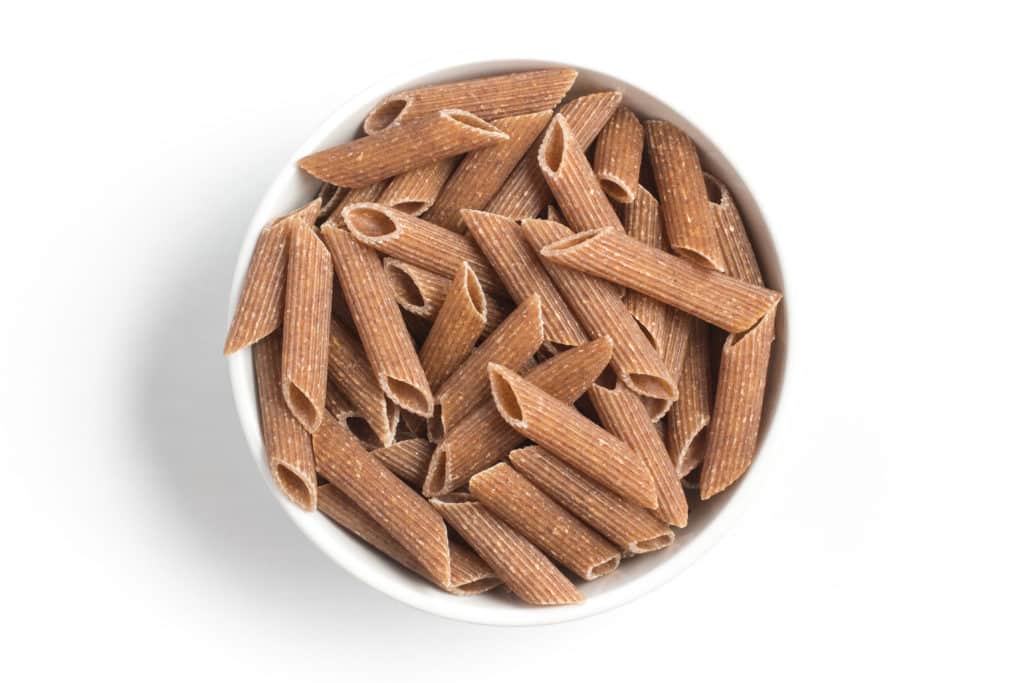
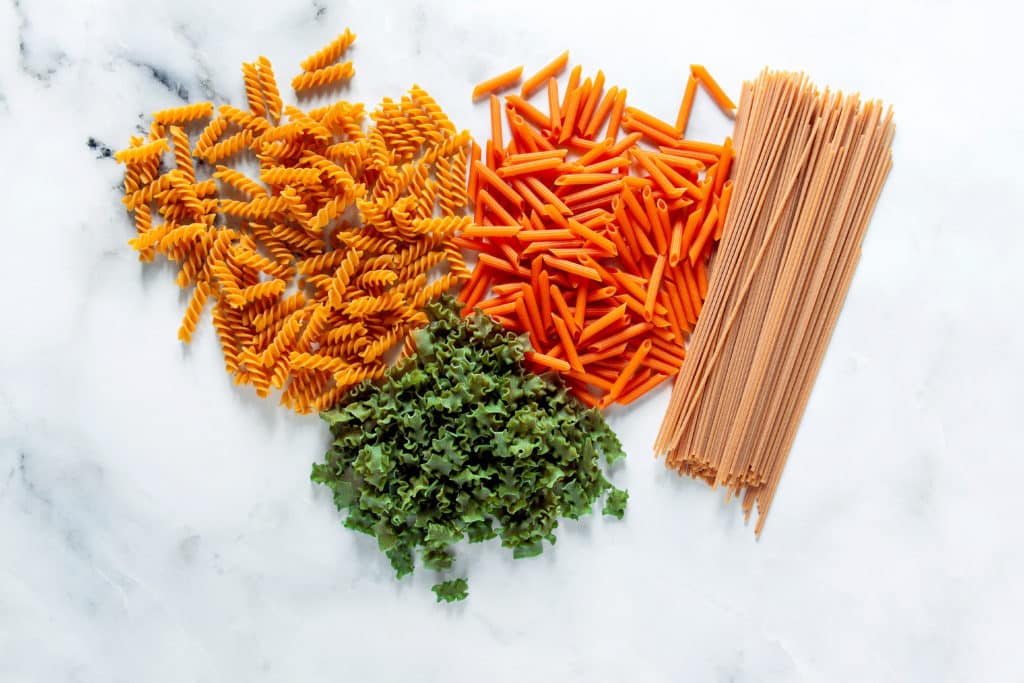
Gluten-free Pastas
Gluten is a protein found in wheat and related grains like barley, rye, spelt, faro, and bulgur. Aside from pasta, a few popular foods made from these grains are breads and cereals. Gluten helps pasta maintain its many shapes and gives it the slightly chewy texture. Gluten-free pastas can be made from ingredients such as rice or corn. While gluten-free pasta is tasty and can be a preference, individuals who have not been diagnosed by a doctor with a condition, such as Celiac disease, derive no nutritional benefit by choosing to eat gluten-free pastas.
Rice Pastas
Rice pastas, sometimes referred to as rice noodles, are made from rice flour and can often be found in Asian grocery stores or in the international section of supermarkets. Versatile with mild flavor, they’re often used in stir-fries and soups. With a delicate texture and no gluten, rice noodles are perfect for those who have a gluten sensitivity or allergy.
